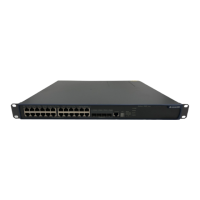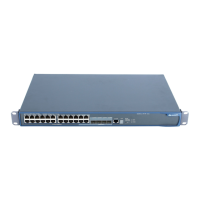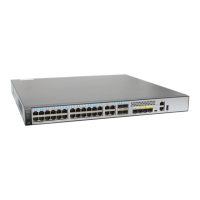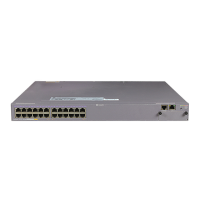Operation Manual – 802.1x
Quidway S5600 Series Ethernet Switches-Release 1510 Chapter 1
802.1x Configuration
Huawei Technologies Proprietary
1-8
z Upon receiving the key(encapsulated in an EAP-request/MD5 challenge packet)
from the switch, the client program encrypts the password of the supplicant
system with the key and sends the encrypted password (contained in an
EAP-response/MD5 challenge packet) to the RADIUS server through the switch.
(The encryption is irreversible.)
z The RADIUS server compares the received encrypted password (contained in a
RADIUS access-request packet) with the locally-encrypted password. If the two
match, it will then send feedbacks (through a RADIUS access-accept packet and
an EAP-success packet) to the switch to indicate that the supplicant system is
authorized.
z The switch changes the state of the corresponding port to accepted state to allow
the supplicant system access the network.
z The supplicant system can also terminate the authenticated state by sending
EAPoL-Logoff packets to the switch. The switch then changes the port state from
accepted to rejected.
Note:
In EAP relay mode, packets are not modified during transmission. Therefore if one of
the four ways are used (that is, PEAP, EAP-TLS, EAP-TTLS or EAP-MD5) to
authenticate, ensure that the authenticating ways used on the supplicant system and
the RADIUS server are the same. However for the switch, you can simply enable the
EAP relay mode by using the dot1x authentication-method eap command.
II. EAP terminating mode
In this mode, packet transmission is terminated at authenticator systems and the EAP
packets are converted to RADIUS packets. Authentication and accounting are
accomplished through RADIUS protocol.
In this mode, PAP or CHAP is employed between the switch and the RADIUS server.
The authentication procedure (assuming that CHAP is employed between the switch
and the RADIUS server) is illustrated in the following figure.

